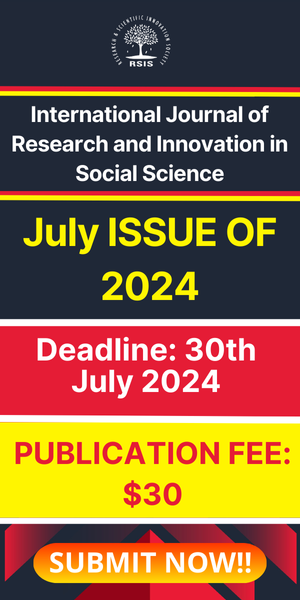Global Business Infrastructure: Assimilation is Ineffective at the Cultural Level
- September 30, 2021
- Posted by: rsispostadmin
- Categories: IJRISS, Social Science
International Journal of Research and Innovation in Social Science (IJRISS) | Volume V, Issue IX, September 2021 | ISSN 2454–6186
Global Business Infrastructure: Assimilation is Ineffective at the Cultural Level
Dr. Herbert J. DeGraffe, Jr.
Sports Advertising Associates, Inc. United Management Consortium
Abstract: Students of the world have diverse opinions on sociocultural issues, reflecting their perspectives. Developing an increased tolerance for the emerging understanding of diversity through various interpretations is compatible with citizenship education. Therefore, an individual, a group, or an organization is the second dimension of diversity control elements. Nevertheless, assimilation is ineffective at the cultural level through the primary dimension, but assimilation is more effective and processed at the second dimension with groups and organizational levels. Thereby the individual does not have to assimilate and lose their identity. Consistent with the broader usage of classical organizational theories, diversity refers to variability in structural, institutional traits within and across dimensional borders of organizations.
I. INTRODUCTION
Research demonstrates that leveraging diversity is a necessary skill set that an organization must acquire to succeed in its mission in today’s global business setting. However, the question that remains an important area of inquiry is how to leverage diversity. The article “Business Schools Expand Global Reach” recounts how businesses have looked to schools to fill the need for expertise in the use of business intelligence (Walker, 2006). Diversity refers to using and leveraging human differences toward organizational effectiveness and productive business goals (Stevens & Ogunji, 2011). The author of Workforce America! (as cited in Stevens & Ogunji, 2011), states that managing employee diversity is a vital resource that outlines categorical differences as primary and secondary dimensions.
Since there is a great deal of conversation, intellectual thought, and research regarding diversity dynamics in the workplace, in-depth resources are needed. The changing 21st-century globalization movement and the influences management need to create effective change, critical thinking, and deeper implementation regarding global socialization. The World Trade Organization (WTO) adopted the position during its 2004 debate that globalization poses a grave threat to cultural diversity. Many argued that cultural goods and services should be treated as an exception to the free trade application since it had been considered restrictive and protectionist, thereby exchanging the word except cultural diversity. There was a call by the international community to adopt as a principle of international law which France proposed under the aegis of UNESC for a cultural diversity international agreement (Moreau & Peltier 2004).


